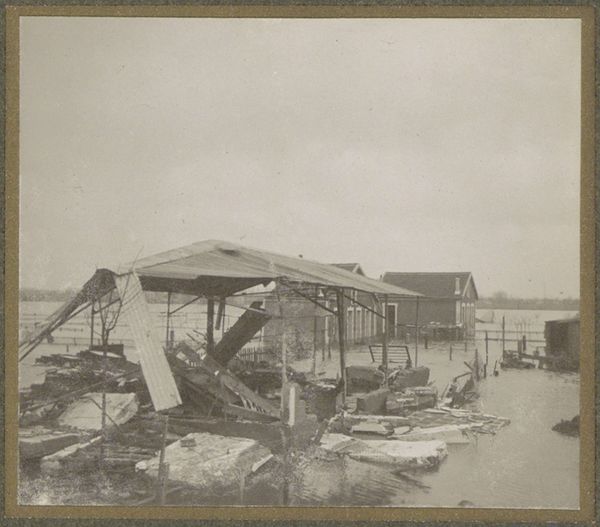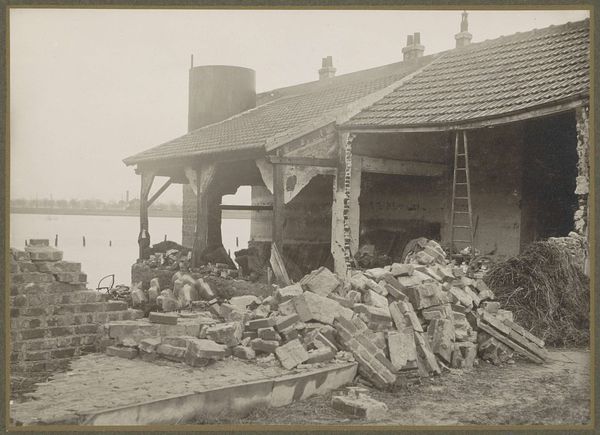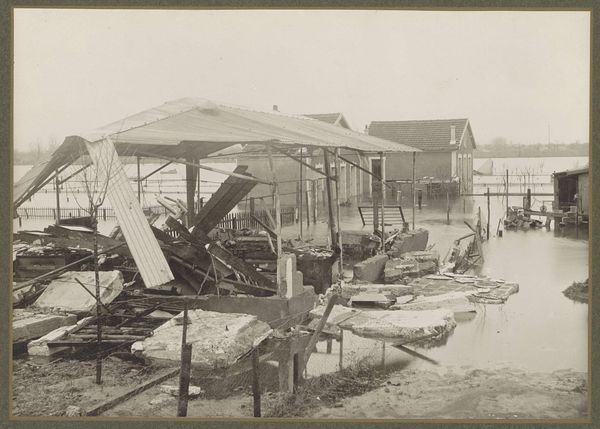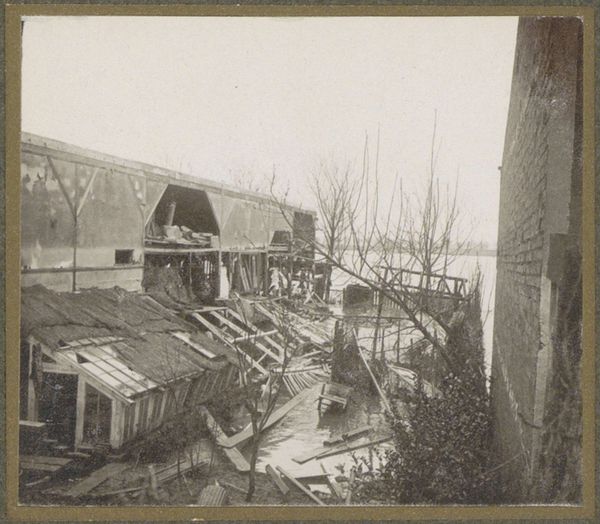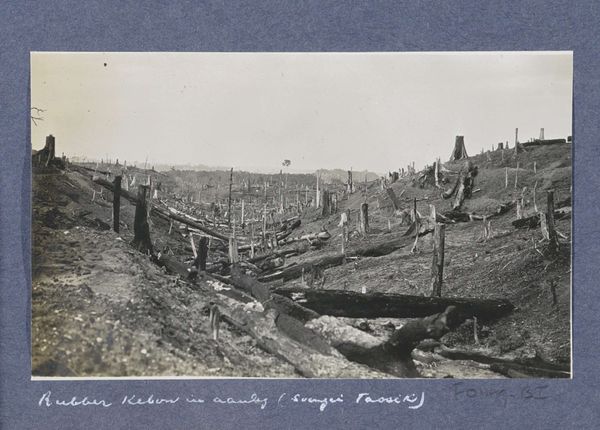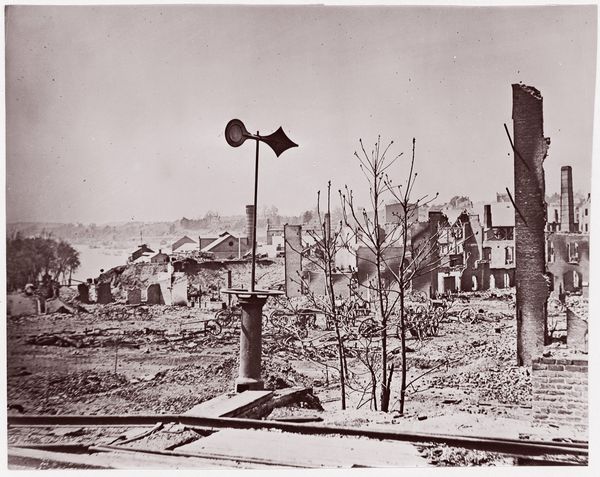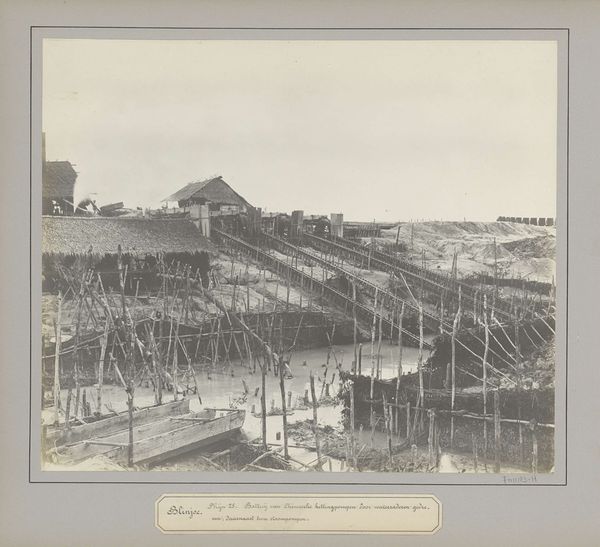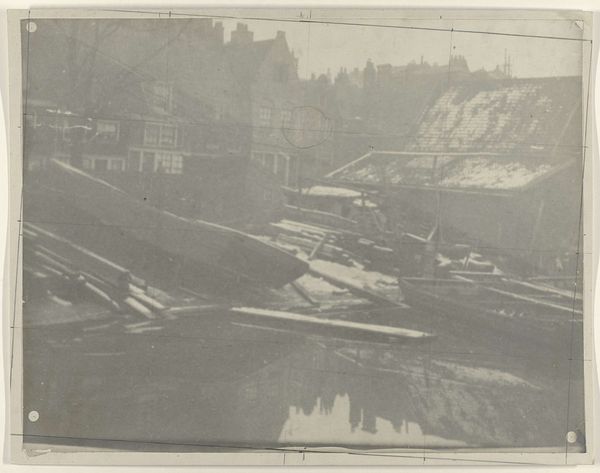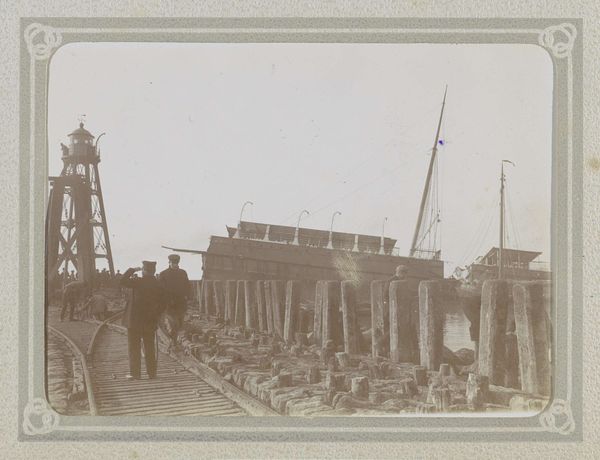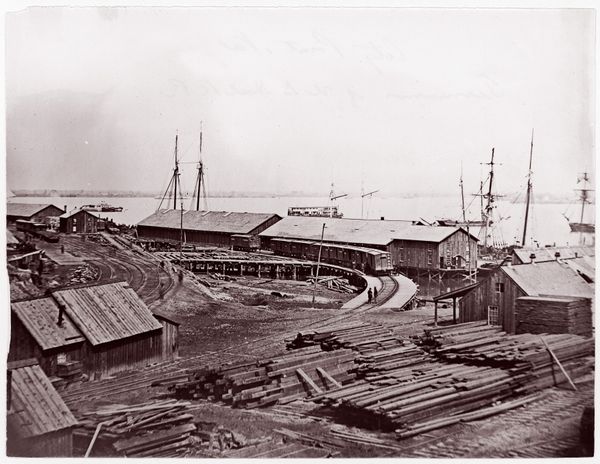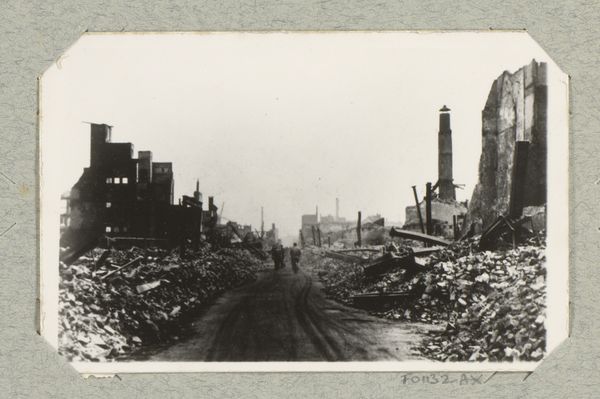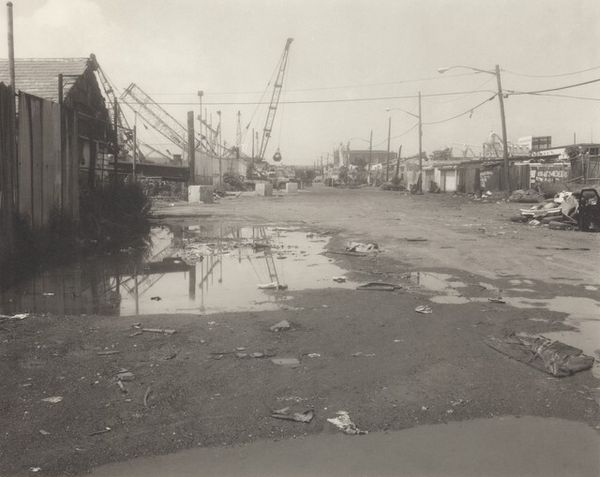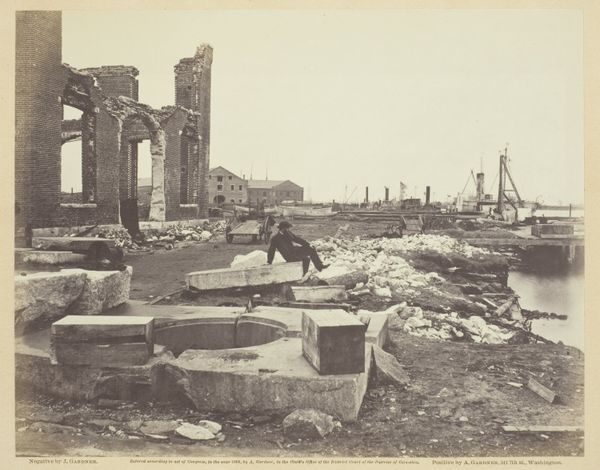
Dimensions: image: 450 x 685 mm support: 540 x 690 mm
Copyright: © Tacita Dean, courtesy Frith Street Gallery, London and Marian Goodman Gallery, New York/Paris | CC-BY-NC-ND 4.0 DEED, Photo: Tate
Editor: Tacita Dean’s "The Wreck of Worthing Pier" presents a scene of devastation. The pier’s skeleton looms in the background, while debris litters the foreground. How does this image speak to the cultural understanding of ruins? Curator: This piece speaks volumes about how we, as a society, perceive and interact with the relics of our past. Piers, originally symbols of leisure and connection, become poignant reminders of vulnerability and change. Consider the pier as a site of collective memory. Editor: So the ruin itself becomes a commentary on the passage of time and the fragility of public spaces? Curator: Precisely. Dean’s work invites us to reflect on the socio-political forces that shape our built environment and how their decay impacts our collective consciousness. It's a public monument, now failing. Editor: It makes you wonder what other structures we see as permanent are equally as fragile. Thanks for your insight.
Comments
tate 3 months ago
⋮
http://www.tate.org.uk/art/artworks/dean-the-wreck-of-worthing-pier-p20257
Join the conversation
Join millions of artists and users on Artera today and experience the ultimate creative platform.
tate 3 months ago
⋮
The Wreck of Worthing Pier belongs to a portfolio of twenty black and white photogravures with etching collectively entitled The Russian Ending. The portfolio was printed by Niels Borch Jensen, Copenhagen and published by Peter Blum Editions, New York in an edition of thirty-five; Tate’s copy is the fifth of ten artist’s proofs. Each image in the portfolio is derived from a postcard collected by the artist in her visits to European flea markets. Most of the images depict accidents and disasters, both man-made and natural. Superimposed on each image are white handwritten notes in the style of film directions with instructions for lighting, sound and camera movements, suggesting that the each picture is the working note for a film. The title of the series is taken from a convention in the early years of the Danish film industry when each film was produced in two versions, one with a happy ending for the American market, the other with a tragic ending for Russian audiences. Dean’s interventions encourage viewers to formulate narratives leading up to the tragic denouements in the prints, engaging and implicating the audience in the creative process.
